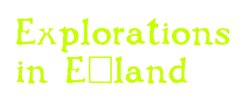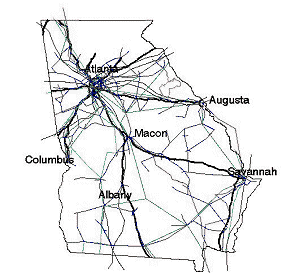 |
What does the electronic landscape really look like up
close? A survey of the terrain gives us an idea of the complexity, both material
and conceptual.
The lush media of electronic text gives us a sense of the look/feel of deSoto in his armor, the difficulty of crossing the Chattahoochee, and the mysterious beauty of the country. But deSoto's ill-fated adventure is illustrative for another reason. Because we can conceive of the journey as both physical exploration and historical event, we can see the way in which the various complex elements overlap. In physical terms, we can identify the detailed description of the turkeys with a location at Hogcrawl Creek near Montezuma, Georgia. The narrative of colonial conquest describes a search for gold, or the inland ocean, or a place to extend Christianity. The scientific/anthropological narrative stresses the damage to the native culture by disease and outright destruction. While each of these versions contains its truth, finally, all of them are abstracts. Hanging on to a horse's tail in the swirling waters of the Chattahoochee must have been quite another thing.
The sun rises on a different land. When we enter the wilderness of electronic communication, we immerse ourselves in a world that is every inch as alien, complicated, detailed, and contested as 16th century Georgia. Electronic communication, of course, includes everything from the telephone to the most sophisticated nano-computing device. For our purposes, there's a huge amount of real estate to cover if we just want to talk about electronic literature. We are concerned with issues of the legitimate goals of electronic textuality, access to the networked world, publishing methods and viability, means of archiving, and the task of writing electronic literature itself. We stumble along paths sometimes open, often obscured.
The Georgia High Speed Telecommunications Network. |
 |
|
© Marjorie Coverley Luesebrink // The Lore and Lay of E-land // Kessesaw State University, March, 2002 |



